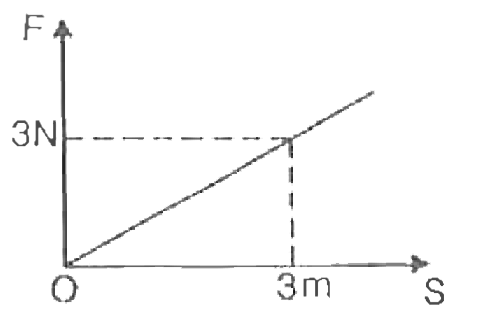Complete Solutions to Exercises (A) of chapter FRICTION, WORK POWER AND ENERGY of Class 11 book with complete answers and questions
| Class 11 | PHYSICS |
| Chapter | FRICTION, WORK POWER AND ENERGY |
| NN GHOSH | Exercises (A) |
| Number Of Questions | 15 |
| Academic Year | 2023-24 |
A block weighing 5 kg is pressed against a verticalk wall by a normal force of 150 N the coefficient of friction along being 0.5 . Find the force required to cause the block to move (a) horizontally, (b) vertically upward, (c) vertically downwards.
View SolutionA body of mass 4kg rests in limiting equilibrium on a rouch plane whose slope is `30^(@)`. The slope is subsequently increased to `60^(@)`. Calculate (i) coefficient of limiting friction between the body and the surface, (ii) acceleration down the plane if coefficient of kinetic friction is 0.4, (iii) force required to prevent it from sliding down the plane, (iv) force required to just move it up the plane. `(g = 9.8 m//s^(2))`.
View SolutionThe length of a simple pendulum of 0.4 m. The bob of the pendulum is drawn aside till the string is horizontal, it is then released from this horizontal position, What will be its velocity when it reached the lowest point in its swing ? `(g = 9.8 m//s^(2))`
[Hint : Loss in potential energy = gain in kinetic energy]
View SolutionA block slides down an inclined plane of slope `theta` with constant velocity. It is then projected up the plane with an initial speed `u`. How far up the incline will it move before coming to rest ? Will its slide down again ?
View SolutionA sharp knife of mass `m=1//2` kg penetrates `s=5`cm into fixed wooden block of mass `M=5` kg when it falls from a height of `h=2` m. How much will it penetrate when thrown horizontally with velocity `v = 10 m//s` ? How much will it penetrate if the block is free to move on smooth surface ?
View SolutionA bullet of mass 20 kg travelling horizontally at `100 ms^(-1)` gets embedded at the centre of a block of wood of mass 1kg, suspended by a light vertical string of 1m in length. Calculate the maximum inclination of the string to the vertical.
View SolutionA body moves in a straight line under the action of a variable force which changes with displacement of the body as shown in the figure. What is the work done when the body has been displaced through (i) 0.2 m, (ii) 0.4 m ?

View SolutionA motor-cyclist is moving up an incline 1 in 100 at the speed of 40 kilometres per hour. What is the horse power of the engine if the motor-cycle and its rider together weigh 200 kg, coefficient of friction between tyre and road is 0.1 and air resistance to the system at this speed is 0.5 N per kg of the system ? (746 watts = 1 H.P.)
View SolutionA truck can move up a road which has a gradient of 1 m rise every 50 m with a speed of 24 kmph ? How fast will the same truck move down the hill with the same horse power ? The air resistance to the motion of the truck is 1/25 of its weight.
View SolutionA railroad flat car is loaded with crates with coefficient of friction 0.25 with the car. It the car is moving at 30 kmph, in what is the shortest distance over which the car can be stopped without letting the crates slide ?
View SolutionThe handle of a floor mop makes an angle `theta ` with the vertical. If `mu_(k) and mu_(s)` be the coefficients of kinetic and static friction between floor and mop, show that if `theta` is smaller than certain value `theta_(0)`, the mop cannot be made to slide over across the floor, no matter how great a force is directed along the handle towards the centre. What is the angle `theta_(0)` ?
View SolutionA cord is used to lower vertically a block of mass M through a distance `d` at a constant acceleration `g//4`. Find the work done by the cord on the block.
View SolutionA 2-kg block is dropped from a height of 0.4 m on a spring of force constant `k=1960 N`. Find the maximum distance the spring will be compressed. (Take `g = 9.8 ms^(-2)`)
[Hint : Consider conservation of energy]
View SolutionA light spring is hung vertically from a fixed support and a heavy mass is attached to its. lower end. The mass is then slowly lowered to its equilibrium position: This stretches the spring by an amount d. If the same body is permitted to fall instead, through what distance does it stretch the string?
View Solution1 kg block collides with a horizontal massless spring of force constant `2 N//m`. The block compresses the spring by 4m. If the coefficient of kinetic friction between the block and the· surface is 0.25, what was the speed of the block at the instant of collision? (take `g = 10 m//s^(2)`)

View Solution
Exercises (A) questions and complete solutions for chapter FRICTION, WORK POWER AND ENERGY of BHARATI BHAWAN PHYSICS (HINGLISH) of Class 11